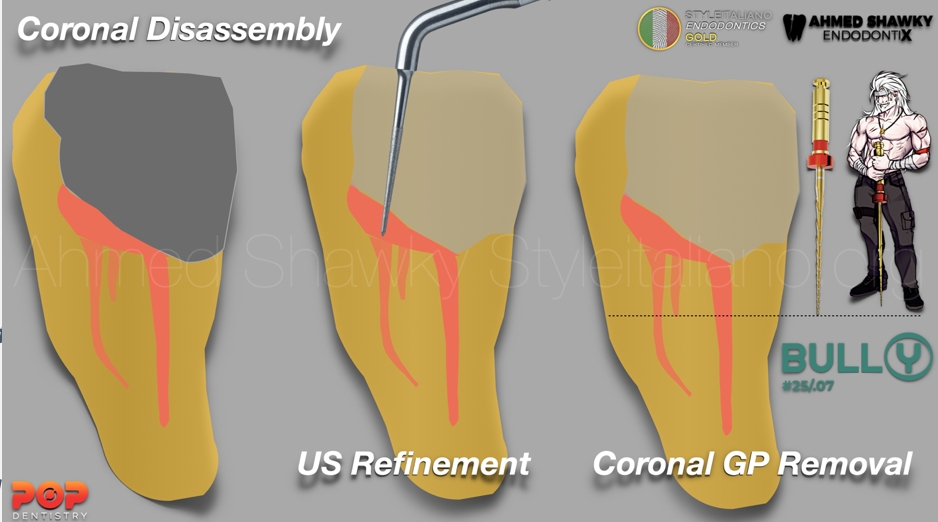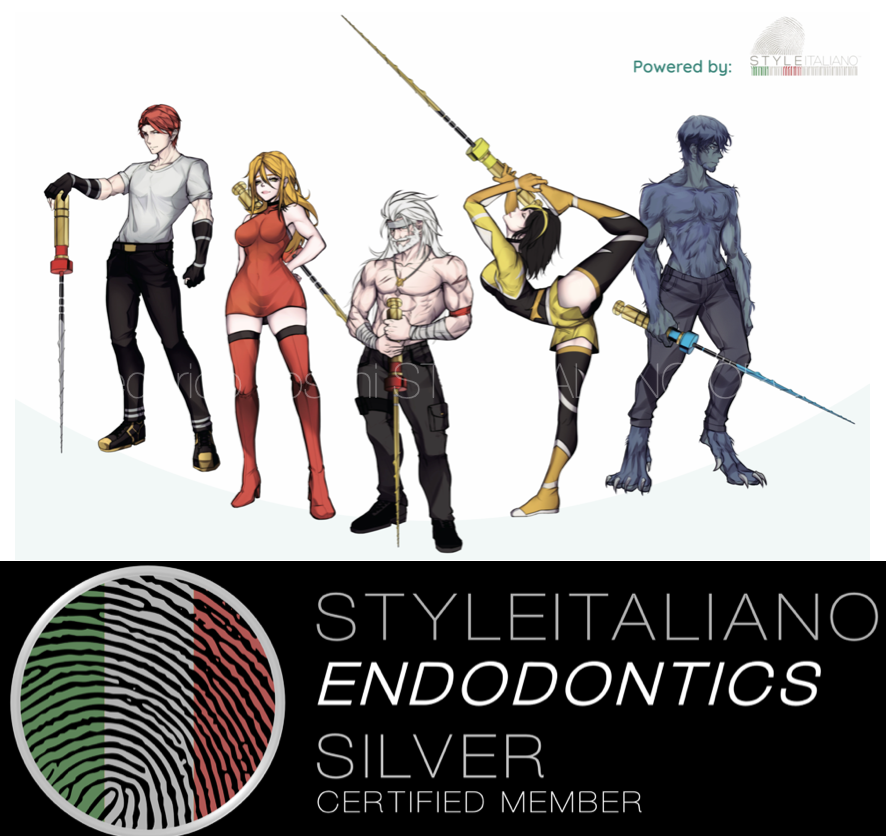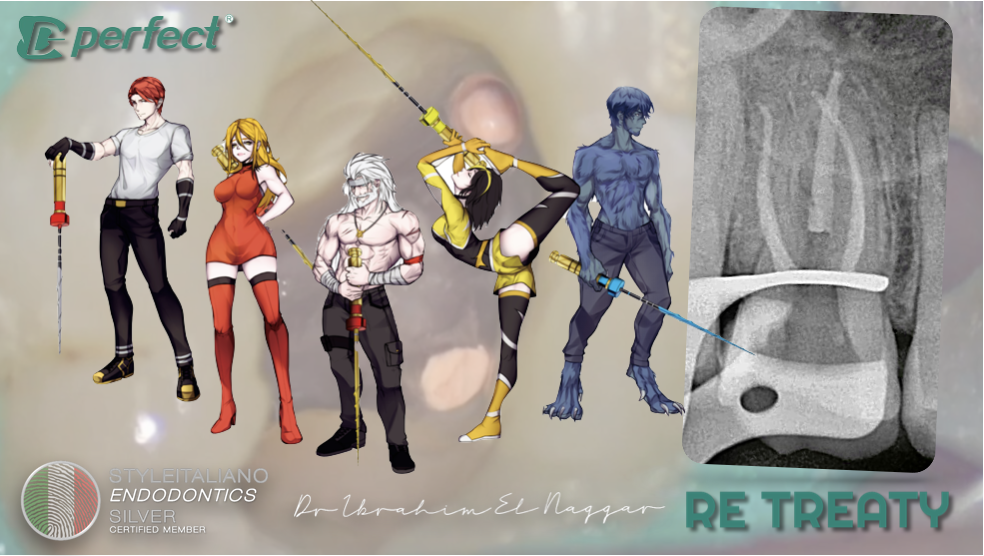
RETREATY: A Fore Player in Non-Surgical Retreatments
08/08/2024
Ahmed Shawky
Warning: Undefined variable $post in /var/www/vhosts/styleitaliano-endodontics.org/endodontics.styleitaliano.org/wp-content/plugins/oxygen/component-framework/components/classes/code-block.class.php(133) : eval()'d code on line 2
Warning: Attempt to read property "ID" on null in /var/www/vhosts/styleitaliano-endodontics.org/endodontics.styleitaliano.org/wp-content/plugins/oxygen/component-framework/components/classes/code-block.class.php(133) : eval()'d code on line 2
The primary objective in endodontics, whether primary treatment or retreatments, is the treatment of apical periodontitis as well as prevention of its recurrence. When we address retreatments, incomplete disinfection of the root canal system is considered as one of the most common causes of post treatment failures.
This article will discuss non-surgical retreatment of a mandibular second molar, with a C-Shaped morphology, presented with symptomatic apical periodontitis. The RETREATY kit was among the fore players that were used for successful management of the root canal system, disassembly of the existing root canal filling and reshaping of the root canals.

Fig. 1
Pre-operative Radiographic examination revealed;
- Large and broken old amalgam restoration
- Radiographic sign of access over-preparation
- short root fills in all the three canals, with extremely short mesio-lingual Gutta percha.

Fig. 2
The first step was to remove the Old Amalgam restoration, after proper isolation of the tooth. Remnants of gutta percha and sealer in the pulp chamber in the was removed using medium powered ultrasonics with intermittent coolant under magnification.
Softening of the coronal portion of Gutta Percha in the MesioBuccal and the distal Root canals were also done using the medium powered ultrasound, followed immediately by the BULL (Y) File [25/.07] operated in EndoMASTER Bluetooth Motor, using ATR mode (450 rpm, 2.5 N.cm, 150/30 CW/CCW, when torque limit is exceeded).

Fig. 3
There was a block in the ML canal, therefore the short GP filling was removed using thin ultrasonic tip
To Manage the ledge in the ML canal, Inner Wall modification was performed using a thin and pre-curved ultrasonic tip, operated at low power, under high magnification… to remove debris, EDTA 17% was used every 10-15 seconds to improve visibility under the dental operating microscope.
Following the inner wall modification, direct access to the mesiolingual canal was achieved using a #10 D-File from perfect Endo. Working length determination was determined using The Endo Master Built-in Apex locator. Manual glide path was then created and secured until a super-loose #10 K in all canals.

Fig. 4
The Retreaty Sequence used in the case
The Root canal System was confirmed to be confluent. Irrigant activation was performed using Ultra-Dancer Activator. Using the Ultrasonic activation loosened some gutta percha remnants from the distal canal walls, which could be retrieved using a Hedström file. Ultrasonic activation continued in the final rinse protocol as well, activating both full strength NaOCl and EDTA 17% prior to obturation.
Obturation was performed using modified warm compaction using GP-Flow heat carrier and
Subsequent back-filling.

Fig. 5
The Radiographic Workflow
Conclusions
When dealing with Anatomy, variability is the rule. This is the reason that the endodontic practitioner must be cautious not to create any alteration of the anatomy (such as ledges, or transportations), as it will affect the treatment outcome
The introduction of New files systems like ReTreaty, which is designed to address different parts of the root canals system in a minimally invasive, yet efficient manner, allowed the clinician to manage different retreatment cases cases with an excellent margin of safety and predictability
Bibliography
Schilder H. Cleaning and shaping the root canal. Dent Clin North Am. 1974; 18: 269-296S
childer H. Filling root canals in three dimensions. Dent Clin North Am. 1967; : 723-744
Swati Srivastava, Current Strategies in Metallurgical Advances of Rotary NiTi Instruments: A Review J Dent Health Oral Disord Ther 2018, 9(1): 00333
Gao Y, Gutmann JL, Wilkinson K, Maxwell R, Ammon D (2012) Evaluation of the impact of raw materials on the fatigue and mechanical properties of ProFile Vortex rotary instruments 10.1016/j.joen.2011.11.004
Shen Y, Qian W, Abtin H, Gao Y, Haapasalo M (2011) Fatigue testing of controlled memory wire nickel-titanium rotary instruments J Endod 2011 Jul;37(7):997-1001. doi: 10.1016/j.joen.2011.03.023.
Shen Y, Qian W, Abtin H, Gao Y, Haapasalo M (2012) Effect of Environment on Fatigue Failure of Controlled Memory Wire Nickel-Titanium Rotary Instruments https://doi.org/10.1016/j.joen.2011.12.002
Shen Y, Zhou HM, Zheng YF, Peng B, Haapasalo M. Current challenges and concepts of the thermomechanical treatment of nickel-titanium instruments. J Endod. 2013 Feb;39(2):163-72. doi: 10.1016/j.joen.2012.11.005. PMID: 23321225.
Peters OA, Gluskin AK, Weiss RA, Han JT. An in vitro assessment of the physical properties of novel Hyflex nickel-titanium rotary instruments. Int Endod J. 2012 Nov;45(11):1027-34. doi: 10.1111/j.1365-2591.2012.02067.x. Epub 2012 May 8. PMID: 22563821.




